Before watching 13 Reasons Why with her friend, 18-year-old Shelby Anders had no idea how she was going to ask him to senior prom. The high schoolers finished the whole series together in one week and adhered to the classic rules of Netflix bingeing: No watching alone or continuing ahead without one another.
In that week, 13 Reasons Why became one of their favorite shows and brought them closer as friends. Soon enough, Anders was planning a promposal based on the show.
Using pieces of paper cut out in the shape of cassette tapes, Anders wrote out 13 reasons why he should go to the prom with her and showed up to his house with a sign that read, “I’ll ask while you’re still alive...answer before it’s too late. Here are thirteen reasons why you should be my prom date.”
He only said yes bc he would've been on my next tape if he didn't 😊#promposal @13ReasonsWhy
Anders, who hails from suburban Illinois, is around the same age as Hannah Baker, the central character of 13 Reasons Why. The show begins after Hannah has killed herself, leaving behind a box of 13 cassette tapes for some of her classmates, including Clay Jensen (who has a crush on Hannah). She includes instructions to pass the tapes on to the next person they hear mentioned on the tapes. These people, she says, are the reasons she ended her life.
“In one of the episodes, when Hannah was looking at Clay after he confessed his love for her, one of the deep things that really hits you was when she said, ‘You should’ve said all this when I was alive,’” Anders told BuzzFeed News. “That was one of the craziest scenes, so that’s where I got the ‘I’ll ask you while you’re still alive’ from.”

Anders is one of dozens of teenagers who've come up with 13 Reasons Why–themed promposals. A teen from the Bay Area posted her boyfriend’s promposal based on the show, and it netted over 18,000 retweets. Another from Connecticut also created a promposal related to the Netflix series with a friend she’s going to the prom with (sans romantic dates).
There’s a lot of pressure — as well as a genuine desire — to think of creative ways to ask your date to the prom, but some people are skeptical about how teens are using a show about suicide and sexual assault as inspiration for what’s supposed to be a lighthearted and cheerful high school rite of passage. 13 Reasons Why, produced by teen-adored Selena Gomez, has inspired a passionate fandom akin to that of other teen dramas that aren’t centered around such dark issues. In a short time, young people have grown to idolize these characters and obsess over their stories, which has sparked a major debate: Is it dangerous to show Hannah ending her life because it gives the audience step-by-step instructions, or is it important to highlight the horrors of this painful reality?
Anders acknowledged that “suicide is a real issue,” but ultimately, she said that her promposal is “just a pop-culture reference” and 13 Reasons Why is “just a show.”
“If anyone disagrees, that’s their opinion. I don’t think that it’s glamorizing [suicide],” she said. “I think they’re taking it too seriously.”
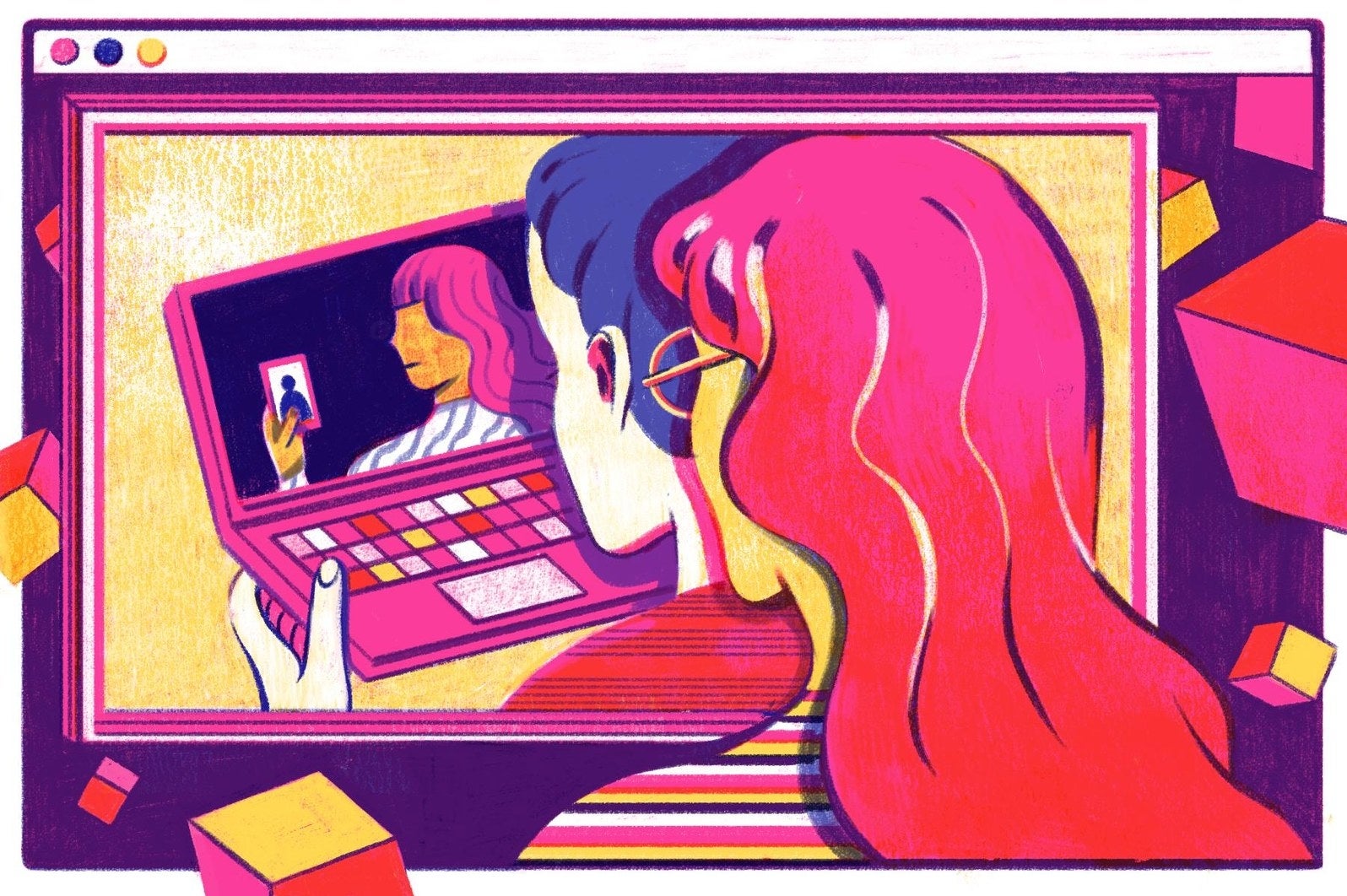
Since 13 Reasons Why launched on Netflix on March 31, it's become the most tweeted-about show so far this year; it's been the subject of various, wide-reaching jokes and memes (see “Welcome to your tape” and “Jeff Atkins deserved better”); fans are painting their nails blue in honor of Hannah, who uses blue nail polish to label the cassette tapes she leaves behind; and teens are even recording videos on Musical.ly (a lip-synching app) quoting Hannah, saying, “I’m about to tell you the story of my life. More specifically, why my life ended.”
Netflix doesn’t publicly release its viewer data, but it’s safe to assume the numbers for 13 Reasons Why — which was picked up for a second season less than two months after it premiered — are vast.
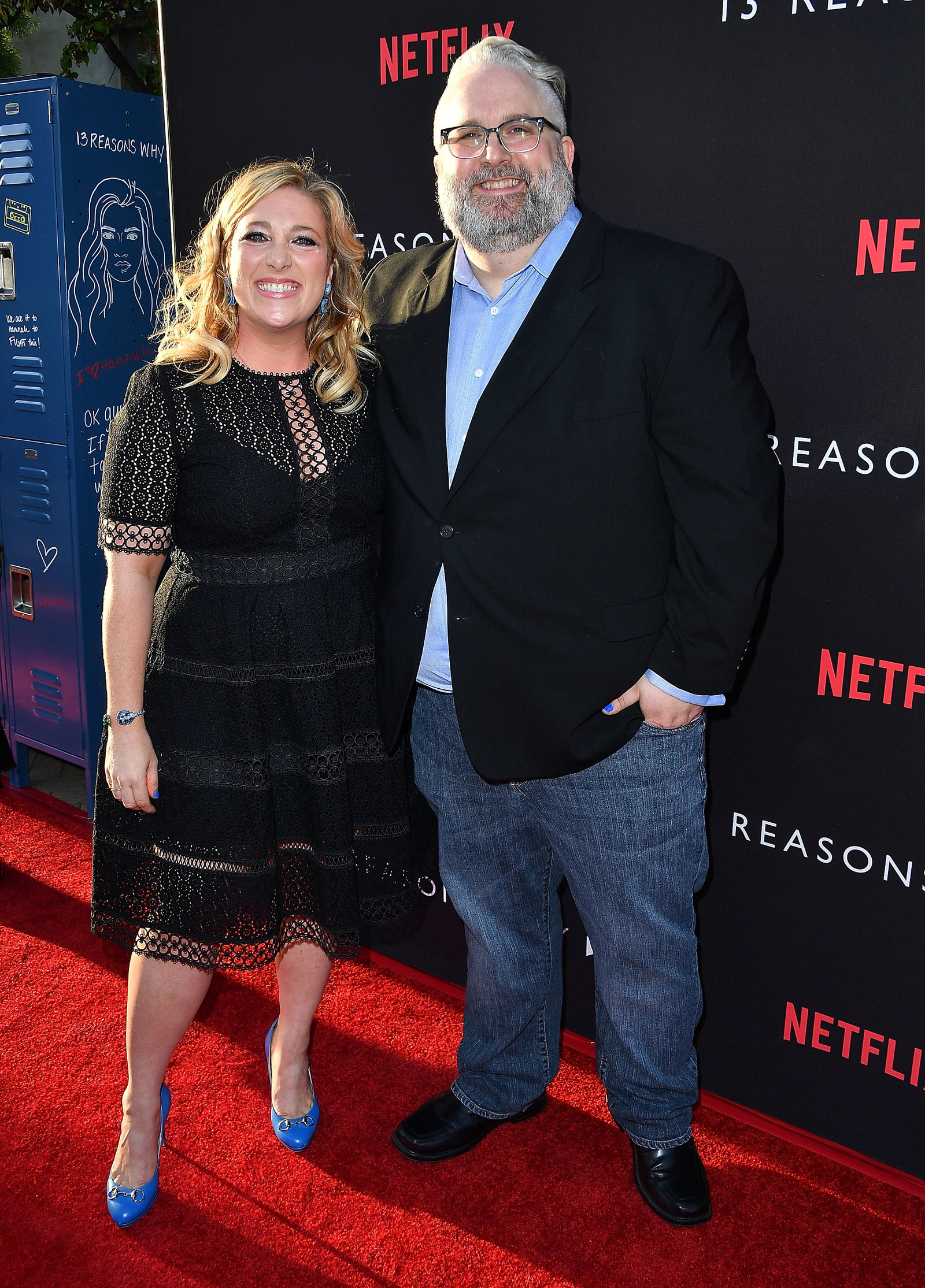
“Kids need to be heard, and I think that our show makes them feel heard,” Joy Gorman, a producer for 13 Reasons Why, told BuzzFeed News. “I think teens have been given a heavy dose of lip gloss and handbags in television.” Gorman went to college with 13 Reasons Why creator Brian Yorkey, and worked with him on his Tony Award– and Pulitzer Prize–winning 2009 Broadway production Next to Normal, which also centers on a character who attempts suicide.
“I feel like kids need to know that a lot of what they go through is universal,” Gorman said. “And maybe in some small way, making a TV show where there’s this diverse representation of different issues and different ways that life can suck sometimes can make them feel like they don’t have to be ashamed about what they’re going through.”
But some parents, school administrators, and mental health experts have criticized 13 Reasons Why for romanticizing suicide, and schools have even sent letters and emails home to parents about their concerns. In late April, the Somers Central School District in Westchester County, New York, for example, sent an email to parents about the series with documents attached, cautioning families to read the materials and have conversations with their children. “In light of this show, as well as several teen suicides that have taken place recently in our region, we want to do everything in our power to prevent further tragedies from occurring,” the letter reads. Accompanying the letter was a handout from the National Association of School Psychologists, as well as 13 Reasons Why talking points from Save.org and the Jed Foundation, a nonprofit organization that focuses on mental health and suicide prevention for teens.
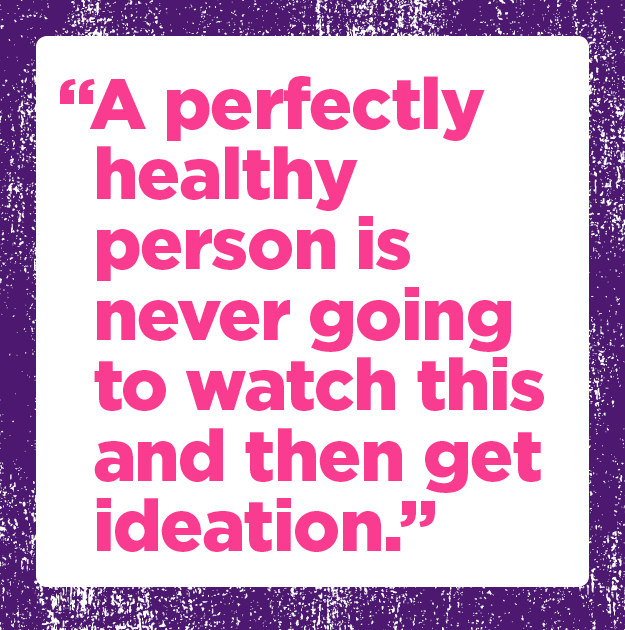
While 13 Reasons Why is hardly the first piece of entertainment aimed at teens to explore the topic of suicide — there's this year's film Before I Fall, the MTV series Awkward, and the 1988 cult classic Heathers, to name a few — the new Netflix series has permeated the lives of its fans in an unprecedented way, redefining what it means to impact young viewers.
And suicide isn't just a minor storyline in 13 Reasons Why; it's the central force behind the plot, making the topic impossible to ignore.
“It’s very graphic, and to some extent, the storytelling is very effective,” Victor Schwartz, medical director at the Jed Foundation, told BuzzFeed News. “It’s obviously produced by people who know what they’re doing, and in some ways that makes it powerful and impactful. But if you think about a sixth- or seventh-grader who’s binge-watching it and feels bullied and left out in the world ... you can imagine they would pretty easily feel that Hannah’s kind of their life story.”
13 Reasons Why, based on the original 2007 novel by Jay Asher, follows Hannah Baker (Katherine Langford), a junior at Liberty High School who ends her own life after being harassed, bullied, and sexually assaulted. On the cassette tapes she leaves behind, Hannah reveals how Justin Foley (Brandon Flynn) lied about what the two of them actually did together when they only kissed, and how he then let Bryce Walker (Justin Prentice) spread a misleading picture of her around school; how Jessica Davis (Alisha Boe) stopped being her friend after she learned that her boyfriend, Alex Standall (Miles Heizer), thought Hannah had the "best ass" in school, which he noted on a “hot or not” list that circulated among their peers; how Tyler Down (Devin Druid) stalked Hannah and took photos of her while she was in her room, including one of her kissing a female friend; how Bryce raped Jessica at a party, and how he then raped Hannah at another; how her guidance counselor, Mr. Porter (Derek Luke), didn't give her the help she needed when she went to him afterwards; and how that night, she killed herself.

While her friends, family, and community mourn Hannah's death, Jessica is also coming to terms with the fact that Bryce raped her and that Justin, her boyfriend after she and Alex broke up, allowed it to happen; Alex is exhibiting signs of being at risk of suicide himself; Tyler starts collecting firearms and hides them in a trunk in his bedroom; and Hannah's parents (Brian d'Arcy James and Kate Walsh) sue the school for failing to prevent their daughter's suicide.
The story is told from the perspective of Clay Jensen (Dylan Minnette), who never told Hannah about the feelings he had for her. Though he didn't do anything to hurt Hannah, she included him in her tapes because she felt he was a part of her story. And when he listens to them, viewers see flashbacks of the events that she's describing, including Jessica's rape, Hannah's rape, and eventually, her suicide.
Schwartz, of the Jed Foundation, thinks the people involved in making 13 Reasons Why “went to significant efforts not to” glamorize suicide, including the 30-minute documentary that follows the series on Netflix, 13 Reasons Why: Beyond the Reasons, which addresses the more serious issues the show depicts. But he also believes the show isn’t “for anyone with a history of serious depression or anxiety or suicidal behaviors.”
“Their intention was to try and present a kind of cautionary tale, showing everything that could go wrong does go wrong, as really a way of demonstrating the sort of risks of bad judgment and friendships that haven’t worked and really have let people down in pretty egregious ways,” Schwartz said.
“It’s very, very rarely a single thing or a group of specific interpersonal events that result in a suicide,” he continued. “Although, in young people it can happen, but there isn’t much of a sense of exploring Hannah’s internal world. Is she depressed? Does she have PTSD? What else might be going on with her is certainly not evident in the story.”
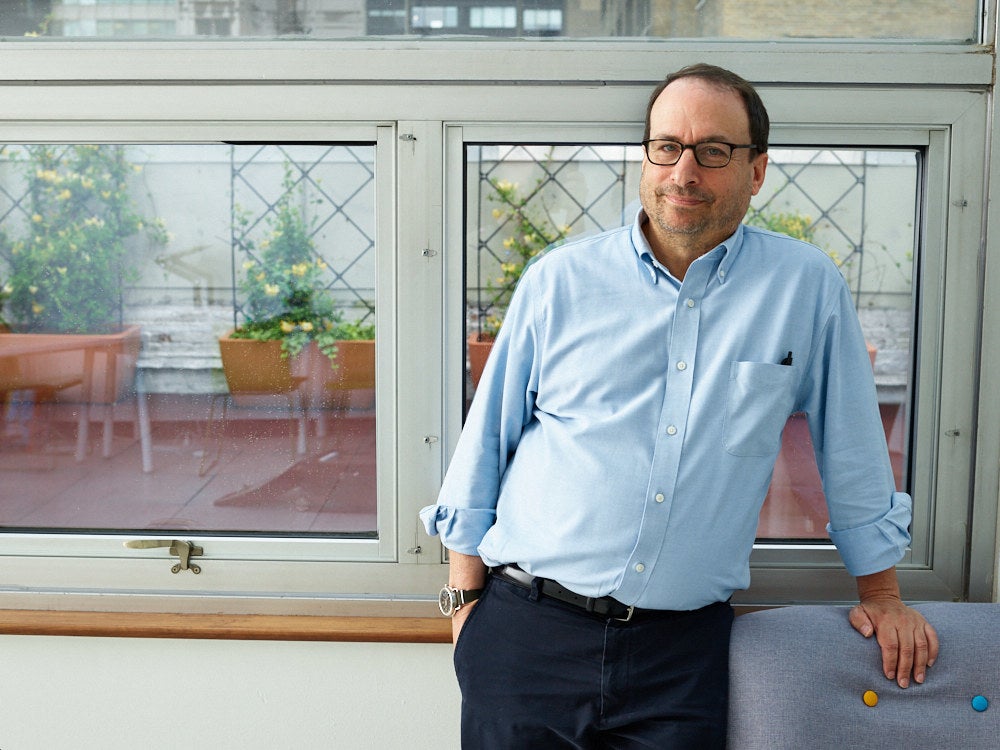
13 Reasons Why doesn’t specifically answer any of Schwartz's questions, nor does it mention or name any kind of mental illness. Producer Gorman said that Hannah’s possible mental health struggles “should be implied creatively,” and that they intentionally wanted to “walk a fine line.”
Like Schwartz, some mental health experts at organizations like the American Psychiatric Association believe that “the realistic portrayal of mental illness in television and movies can be an effective way to reduce stigma around psychiatric issues. But it can be troubling if those portrayals do not show options for treatment.”
“If you suddenly give a kid a prescription or label them with something, then it’s not about how we treat each other,” Gorman said. “Then it’s not about how important it is to treat each other better, to be better, to not rape a passed-out girl, to not bully a socially isolated kid with a camera.”
Schwartz said the 13 Reasons Why team reached out to the Jed Foundation a few days before the show's premiere on Netflix and asked if they would review and comment on it. “When we heard from them, the production was completely done and the train had left the station, effectively,” he said.
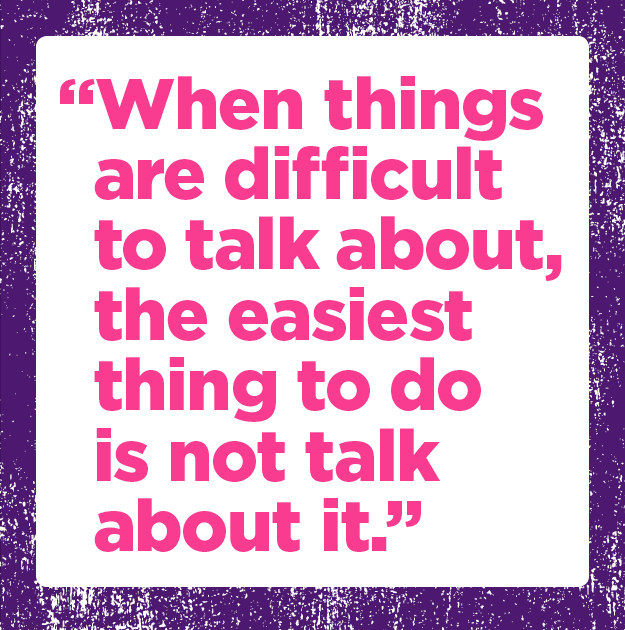
But there were mental health experts who assisted with the series, including Helen H. Hsu, a licensed clinical psychologist in California. She said she was approached to consult on 13 Reasons Why because of her volunteer work, which focuses on “parent education, early prevention, and suicide prevention.”
Hsu was asked to look at early scripts and was consulted at different points during the project, most notably about the decision to include the scene showing Hannah’s suicide. She said she reviewed studies about the possibilities of this creating a copycat effect. Schwartz pointed to research showing that an increase in the visibility of suicide has the possibility of influencing a teen's decision to end their own life, but Hsu decided that “while there are indeed real risks about things like contagion, the evidence is not so conclusive.”
“A perfectly healthy person is never going to watch this and then get ideation,” she said. “A person who already has issues like that should be getting support.”
“There does exist a very real risk of contagion for people who are very vulnerable,” Hsu added. “But there is also a much larger, gigantic community and population that really has to hear and tell stories about suicide. I’ve seen it save people’s lives to know they’re not alone as a person who suffers.”
As recently as May 21, a mother from Clay County, Florida, said her son created his own list of 13 reasons he wanted to end his life and was “committed for psychiatric evaluation” because he harmed himself after watching the show. According to the mother, who is not named in local news stories about the incident, her son watched the Netflix series after it was discussed in one of his high school classes.
“I would never have let my son watch that,” she told News4Jax. “Especially alone.”

Robert M. Avossa, superintendent of the School District of Palm Beach County, sent a letter to parents in late April citing “an increase in youth at-risk behavior,” including self-harm and threats of suicide. “Students involved in the recent incidents have articulated associations of their at risk behavior to the 13 Reasons Why Netflix series,” Avossa wrote.
Two teens in Austria also attempted suicide in May, according to The Telegraph, and 13 Reasons Why was brought up in their cases too. “All I can tell you is that a lot of the children at the school have said they believe there is a connection,” a spokesman for the local school board told the paper.
When reached, Netflix had no comment about these incidents, but a representative pointed to data collected by Crisis Text Line, a nonprofit organization that provides free crisis intervention by way of text messaging. There's a number for the organization on the 13 Reasons Why website under a list of resources, and according to its reports, 3% of people who've messaged the text line since the show premiered on March 31 have mentioned 13 Reasons Why, and 65% of those who do say they're revealing this information for the first time.
The decision to show the main character’s suicide in a graphic scene has become a major criticism of 13 Reasons Why. But, Hsu said, “it almost seems coy or avoidant to not show it when this is the whole premise of the entire show.”
“There’s absolutely nothing in what we were trying to do that would be to glamorize [suicide]," Asher, who served as a consulting producer on the show, told BuzzFeed News. “Not to say that art can’t be done wrong, but you know what you’re trying to do and you have enough people surrounding you saying, ‘This is the way it has to be and this is why.’”
He continued: “When you’re doing everything you can to make it responsible, to do it responsibly, and you know the reason they’re doing it is for a very positive reason, that’s kind of all you can really go with.”
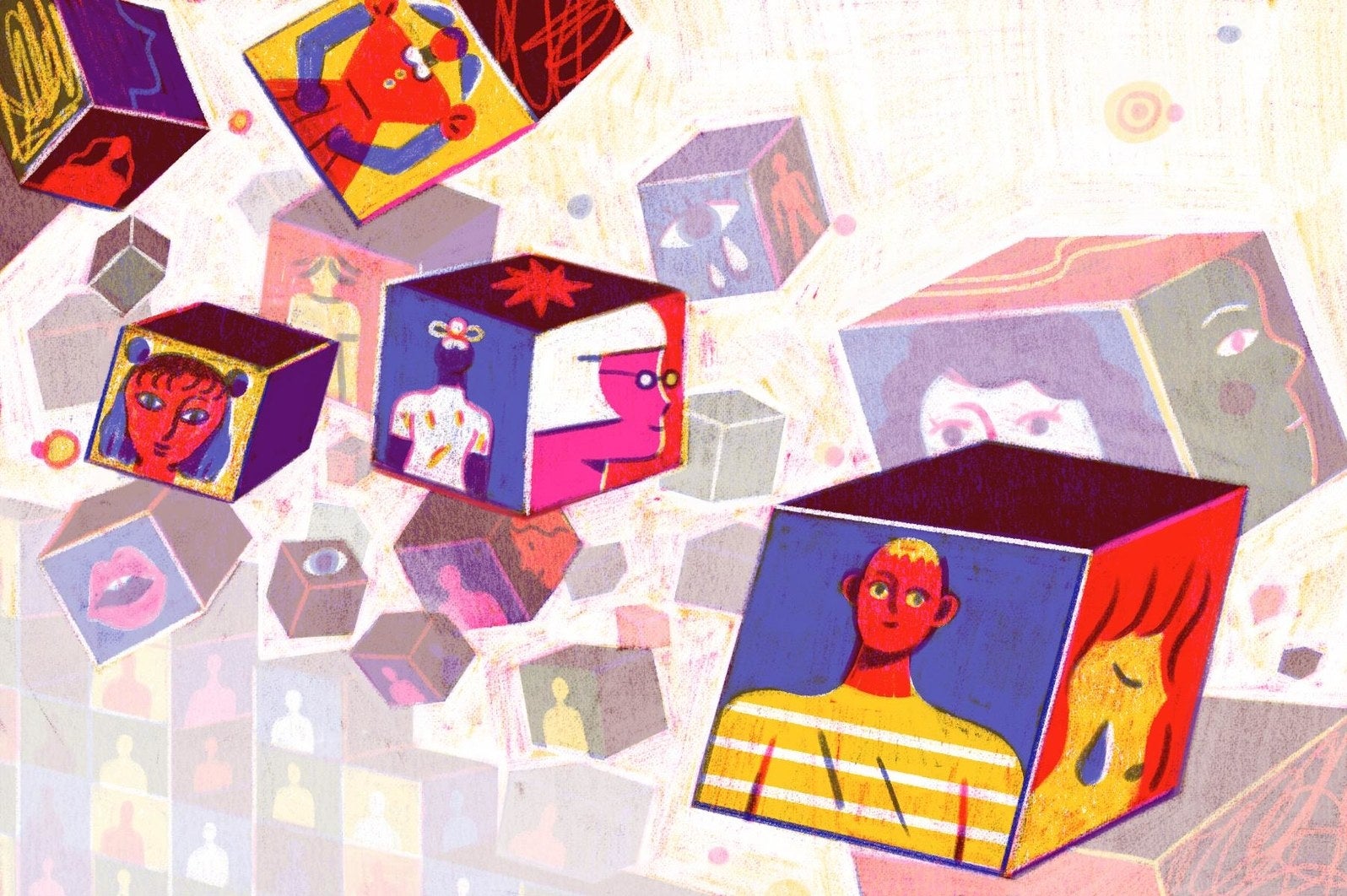
It’s not an easy task to build fictional narratives about suicide that authentically engage young people in a way that isn’t harmful and doesn’t idealize the act, and still tell a compelling story.
Schwartz emphasized that there have been TV shows and movies that have successfully done it; it’s just “very hard.” (He cited the 1980 film Ordinary People, the 2016 HBO documentary Every Brilliant Thing, and the 2015 animated HBO film My Depression: The Up and Down and Up of It as successful examples.)
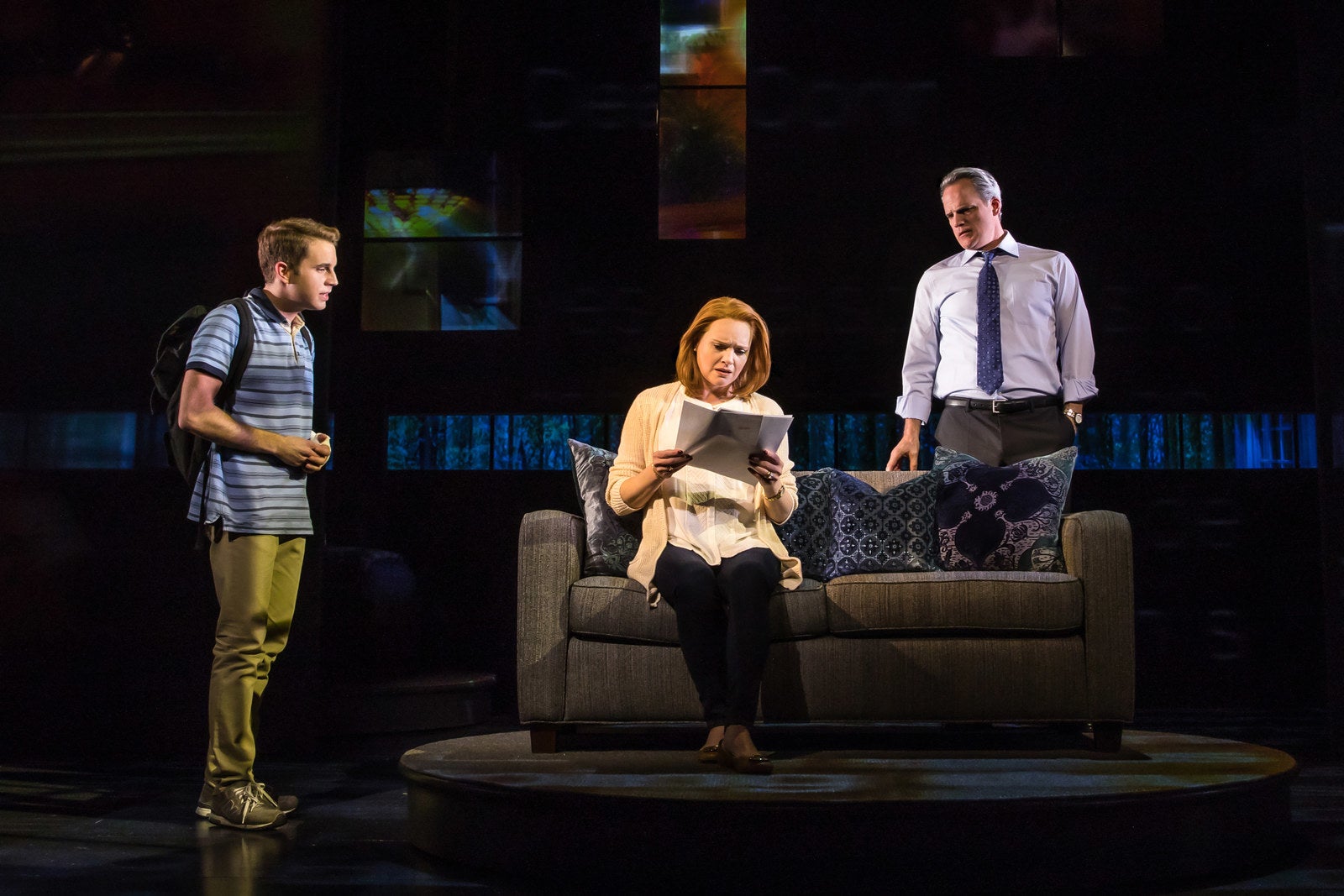
The Tony-nominated Broadway show Dear Evan Hansen also meets Schwartz’s standard. “It actually does, I think, a very good job just by not actually focusing in some ways on the actual suicide,” Schwartz said. “It really focuses on the story around it, and focuses on the relationships and the family issues that come up around it.”
The show’s titular character, portrayed by Ben Platt, struggles with social anxiety, and his therapist tasks him with writing himself a positive letter before the first day of his senior year of high school. Later that day, when he’s feeling down, Evan writes a negative version of the letter, which his classmate Connor Murphy finds at school and thinks is meant to mock him. Shortly after, Connor dies of an overdose, which is treated as a suicide, and his parents find Evan’s letter; they assume it’s a suicide note that Connor wrote to Evan, and Evan fails to correct them. The lie spirals, and soon Connor’s family thinks he and Evan were best friends, leading Evan to grow extremely close to the Murphys. Audiences eventually find out toward the end of the show that Evan also previously attempted suicide.

Unlike in 13 Reasons Why, Connor’s death is not shown onstage, nor is Evan’s suicide attempt. Evan also goes to therapy and takes medication for his anxiety, unlike Hannah. Not to mention, Dear Evan Hansen has a very different ending than that of 13 Reasons Why: Hannah dies, and Evan lives.
“It’s really ultimately about a character who learns to value himself,” playwright Steven Levenson explained. “The show’s really about this one kid who finds a reason to live and discovers his own value. Hopefully the audience leaves the show feeling hope and feeling like, here’s somebody who didn’t let go and somebody who held on, and maybe I can do that too.”
Levenson actually didn’t intend to write about suicide, but as he shaped the story, it became increasingly clear that Evan would deal with “feelings of helplessness, worthlessness, and isolation,” because, he said, “there really is a suicide epidemic happening in the United States, especially among teens.”
Take 15-year-old Audrie Pott, a native of Saratoga, California. In September 2012, the high schooler — who liked playing practical jokes, hanging out with her friends, and watching the Food Network and cooking with her mom — was allegedly assaulted at a party. After becoming a victim of further harassment and bullying, Pott killed herself eight days after the party.
In January of that same year, Daisy Coleman from Maryville, Missouri, then 14 years old, said she was raped by Matthew Barnett, an older football player from her high school. That night, her friend, who was 13 at the time, was also allegedly raped by one of Barnett’s friends. Daisy's mom, Melinda, found her passed out on the front lawn the next morning. The assault was allegedly filmed by another classmate on their cell phone and then passed around school, but police said they never found any evidence of the recording. Nodaway County originally dropped the charges against the accused high schoolers, but after the news story garnered national attention, the courts revisited Coleman's case. Barnett pleaded guilty to one count of misdemeanor child endangerment — not felony sexual assault, which he was also charged with — and ended up receiving a sentence of two years' probation. The 15-year-old boy who assaulted Coleman's friend admitted to the act in juvenile court and was kept in custody for two weeks.
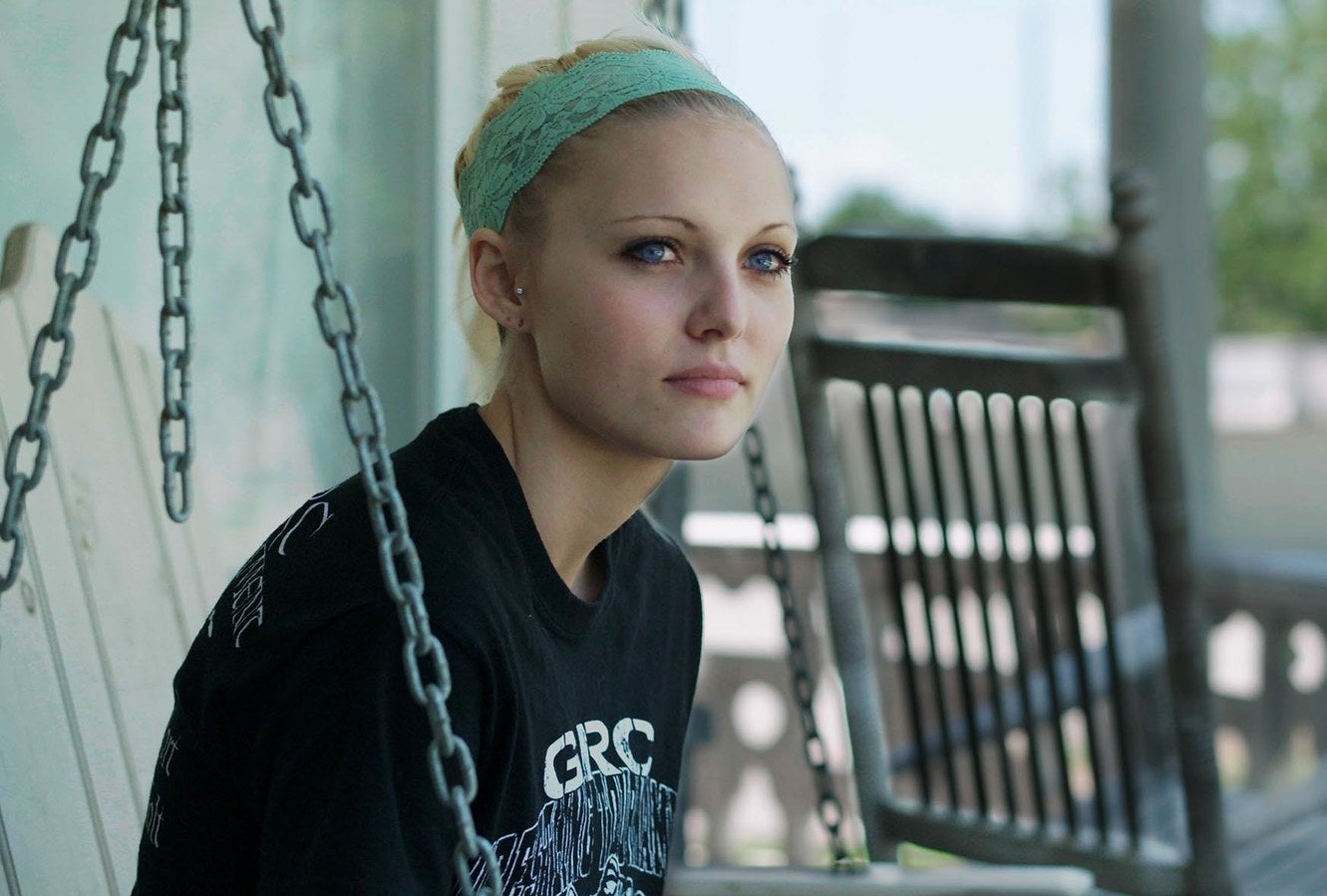
Daisy's life afterward only grew more difficult. She and her family were bullied and harassed endlessly in their community; their home burned down due to a fire that Melinda Coleman believes was intentional. There was a time when Daisy Coleman was thinking about suicide and was even hospitalized after a suicide attempt, but after reaching out for help and finding support through therapy, her family, and other victims, she’s a survivor. The now-19-year-old Coleman is the cofounder of a nonprofit organization called SafeBAE — Safe Before Anyone Else — which aims to educate students about sexual assault and help other survivors.
Pott’s and Coleman’s stories, which are eerily similar to the fictional one in 13 Reasons Why, inspired directors Bonni Cohen and Jon Shenk to make a documentary called Audrie & Daisy, which was released in 2016. “We heard about Audrie because we live in the Bay Area, so it had been a part of our local news out here,” Shenk told BuzzFeed News. “And that was shocking obviously to hear that story: The girl was so distressed by these events that she took her own life.”
While these two specific young women are at the center of the documentary, Audrie & Daisy also discusses how sexual assault, harassment, online bullying, and suicide have become a reality for many young women.
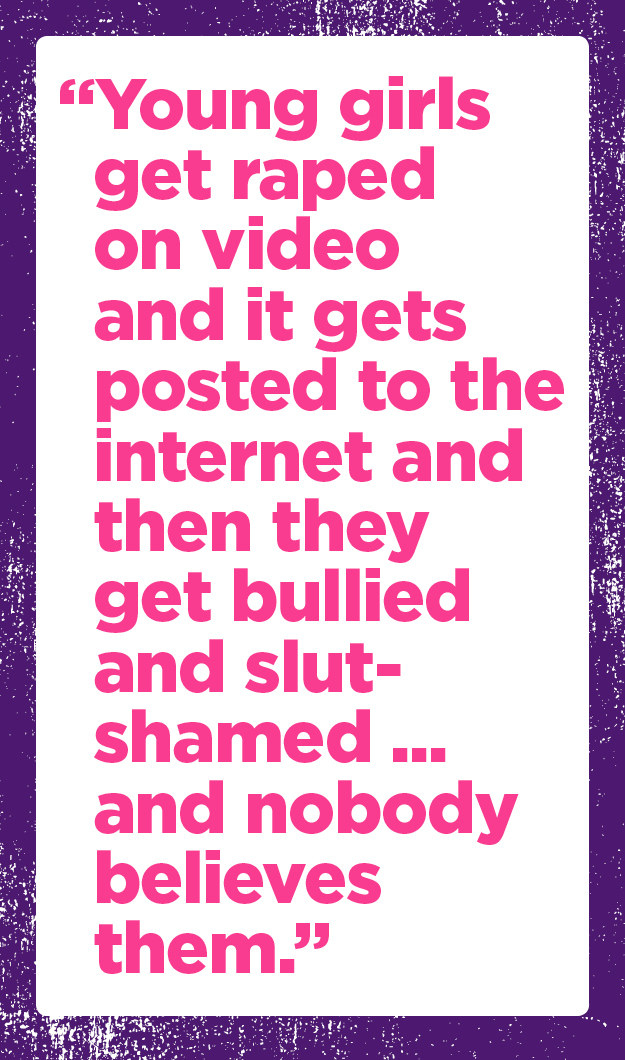
According to the CDC, suicide is the second-leading cause of death in Americans aged 10 to 34, and the 10th-leading cause of death in the US overall. A CDC study from 2016 also showed that suicide is on the rise, specifically for young girls. While there's been an increase in the total number of suicides for every age group, the biggest jump was in the number of suicides among girls between the ages of 10 and 14, which has tripled from 1999 to 2014. The Jason Foundation — a nonprofit organization that specializes in youth suicide prevention — reports that there’s an average of more than 5,240 suicide attempts made by people between the seventh and twelfth grades every single day in the United States.
“We know from our own kids that the moods of teens seem to really rise and fall with their Snapchats and messages and various posts on Instagram and what parties they’re at and where they’re not,” said Shenk, who has two teenagers with Cohen. “So, certainly with Audrie and Daisy, when the insults went well beyond what anybody would consider appropriate and in the range of normal, and they were being attacked, threatened, it was devastating for them.
“I think both Audrie and Daisy felt that the shaming online was kind of the new public square.”
The way young people use technology as a means of communication plays a significant role in 13 Reasons Why. When Hannah has her first kiss on the playground with Justin, he takes a suggestive picture of her coming down the slide, which gives the impression that they were doing more than just kissing. Justin shows the picture to Bryce (his friend and classmate who we eventually learn raped both Hannah and Jessica, Justin’s girlfriend), who then texts the photo around to all of their classmates, fueling rumors about Hannah. Soon, the slut-shaming begins and her male classmates catcall her in the hallways. Tyler also sends a group chat that includes a photo of Hannah and Courtney Crimsen (Michele Selene Ang) kissing — a secret he knew they did not want to get out — to dozens of kids.

“Young girls get raped on video and it gets posted to the internet and then they get bullied and slut-shamed in school on top of being raped, and nobody believes them,” said Gorman, 13 Reasons Why's producer. “And if they don’t know that that can drive a child to suicide, then they have to watch Audrie & Daisy. Because it’s real.”
When writing his novel, Asher said he spoke to a few of his female friends about their high school experiences in order to make the novel feel authentic. “I knew I was writing about things that happened to this girl in high school,” he said. “I really wanted to get a sense from them, in their words, what their high school experience was like, and it did shape where I went with the book a little bit.”
Gorman told BuzzFeed News that she “thinks about Audrie Potts every day” and hopes 13 Reasons Why wakes everyone up to the terror experienced by other young women in Pott’s and Coleman’s shoes.
“When people tell me that we were irresponsible, I think about what that child went through and what so many children went through,” Gorman said, through tears. “They’re not honoring the Jessica Davises and the Hannah Bakers of the world who were raped and had nobody to talk to. They’re forgetting those girls when they say that this doesn’t happen.”
Those behind 13 Reasons Why feel like they didn't just make entertainment; they see the show as a tool for people to start what would otherwise be an uncomfortable conversation.
“When things are difficult to talk about, the easiest thing to do is not talk about it,” Asher said. “People who are hurting can identify with someone else and there’s something powerful about identifying with another hurting person — because if they’re identifying, it means other people will understand.”
Asher noted that telling these kinds of stories by way of fiction can inspire young people to feel comfortable having tough conversations and at the same time provide entertainment, on top of motivating parents and other adult figures to reach out to those who might be struggling.
“You can write about serious things and still be entertaining,” he said. “Right now, for whatever reason, people are really wanting to deal with these things. … Adults are watching [13 Reasons Why] just as much as teens are watching it, and you can’t watch this and not bring it up to a student or a teen in your house.”
Michael Greif, director of Dear Evan Hansen, agrees with Asher that it’s “fantastic that these stories are out there in order to inspire conversations,” and he hopes that they get people to “recognize the terrible, terrible prevalence of these occurrences.” He’s especially pleased that teen depression and suicide are currently represented in theater.

“There’s something extremely personal and extremely impactful about sitting in a dark room with a bunch of people and having other humans and live people enact the story for you,” Greif said.
“That’s the thing that theater does that film and television don’t. There’s this very human story being told in a room in which you’re sort of packed together with a lot of other humans, and it’s being told to you by flesh-and-blood humans. It’s a very unique experience.”
And considering it can't be viewed in the privacy of a teenager's bedroom, it's likely that parents of young people would know if their kids were seeing Dear Evan Hansen.
Audiences are watching 13 Reasons Why, however, anywhere they have Wi-Fi access, and they may be doing so without parental or adult supervision. Just as Hannah’s parents had no idea what was going on with her, it’s easy for parents of teens to be unaware of potentially triggering TV shows that their kids are watching.
“I think sometimes teenagers don’t know when to ask for guidance and parents don’t know when to give it,” said Shenk, Audrie & Daisy's director. “That’s really an age where kids are coming up against these things for the first time. They’re feeling their way through very murky, confusing territory that’s exciting, but challenging and scary.”
Ultimately, Shenk said he “felt this world of teenage sex assault and online bullying was sort of another world unto its own, and it really deserves some creative attention.”
But with that creative attention comes major responsibility.
“You’re haunted by these stats that show that when you talk about suicide, suicide rates go up no matter what,” Shenk said. “So you have to be very careful about how you portray it and talk about it.”
Jessica Yu directed two of the heavier episodes of 13 Reasons Why: Episode 11 (“Tape 6, Side A”) and Episode 12 (“Tape 6, Side B”) — the latter of which includes Hannah’s rape, as well as her former friend Jessica coming to the realization that she had been assaulted by the same perpetrator.
“I think there was a real clear desire to make sure that nothing was just going to be sensationalistic,” Yu told BuzzFeed News. “A lot of the discussion was about how to maintain perspective, a point of view in what was happening to Hannah.”
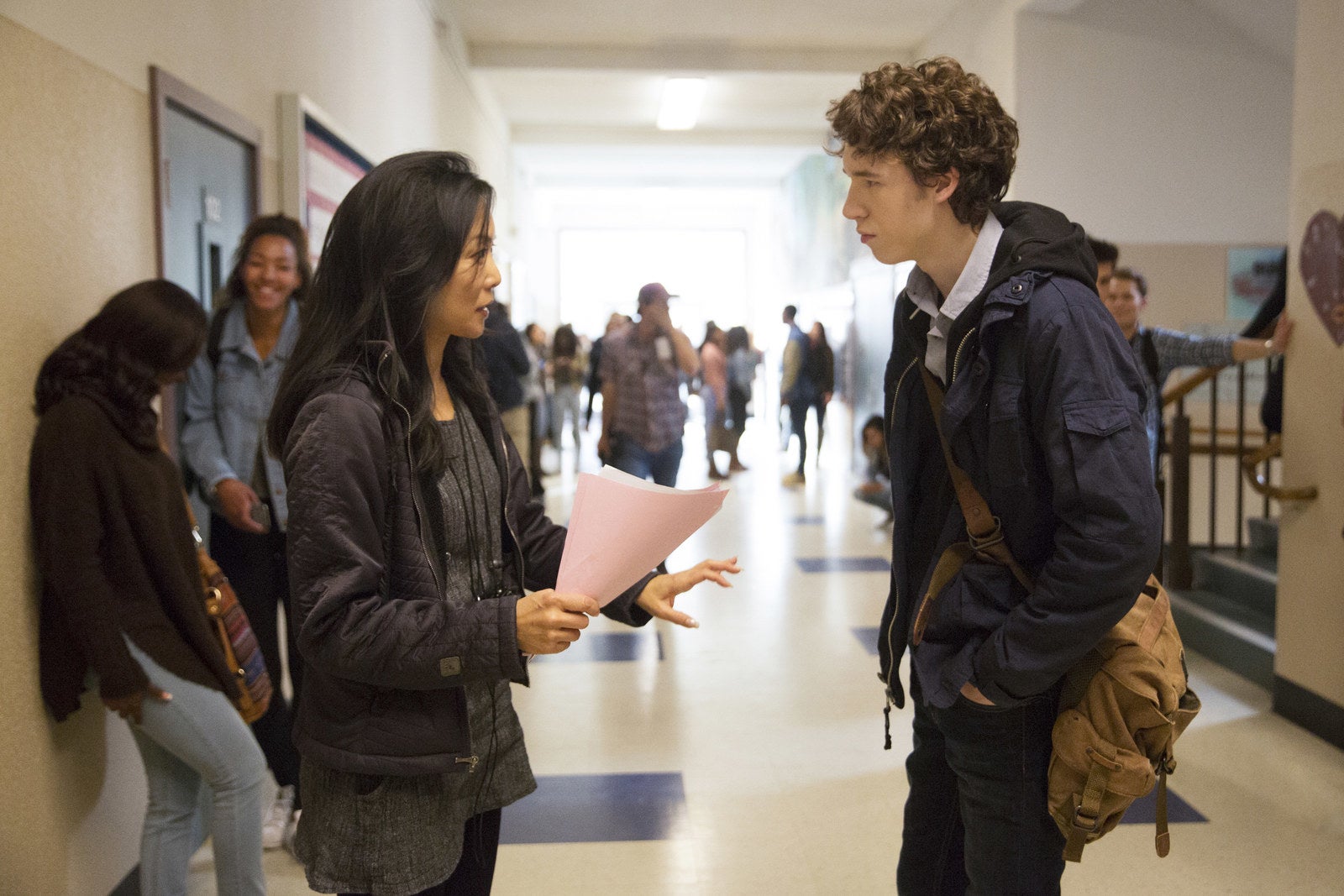
Yu said showrunner Yorkey (who wasn't available to be interviewed for this story) sent her sexual assault scenes from other films to review. “It helped me figure out for myself where the line was drawn,” she said. “What removes the empathy from the scene? What are the images? What are the decisions that detach us from the violence, from the character, from the humanity that needs to be threaded in there?”
The cast and crew also went through a “very mechanical rehearsal” of Hannah's rape scene, shot by shot, so that “everyone could feel comfortable,” Yu said.
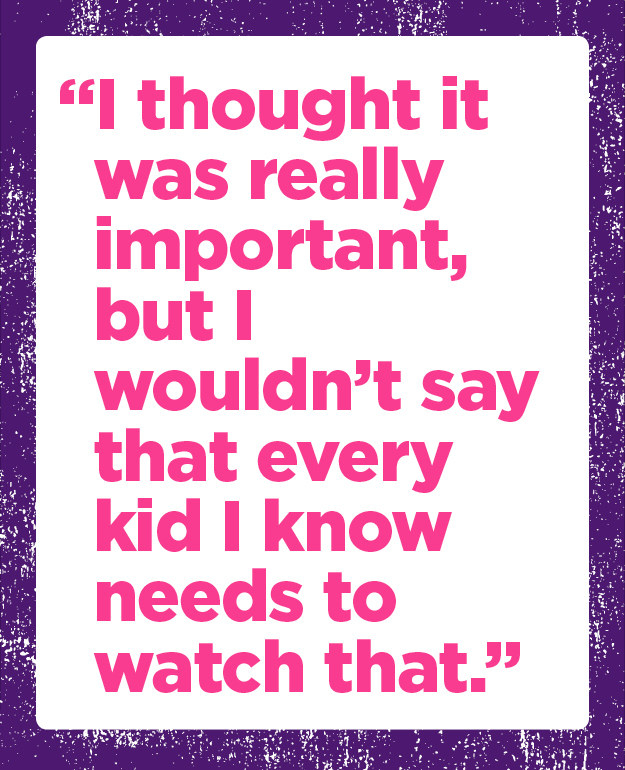
“On the day that we actually shot it, it was still obviously a very difficult thing,” she explained. “I understand why people are disturbed by it, but I think that the intent of the scene and the way that it’s played out is to try to show what happens in an assault like this. It happens way too often and it’s not talked about enough, and I think that it was important to have it make an impact.”
Yu didn’t direct the final episode that shows Hannah ending her life but said she was “stunned” when she watched that scene because it didn’t “shy away from the horror of the actual suicide.”
“I thought it was really important, but I wouldn’t say that every kid I know needs to watch that,” she said. “You really need to take it on a case-by-case basis.” And if parents are unsure whether their children should be watching 13 Reasons Why, specifically the more graphic scenes, Yu suggested “they should maybe watch it with their kids.”
There’s a warning before the episode depicting Hannah’s suicide that reads: “The following episode contains scenes that some viewers may find disturbing and/or may not be suitable for younger audiences, including graphic depictions of violence. Viewer discretion is advised.”
“My main comment was they needed to focus on how it’s not pretty. It’s not romantic,” Hsu said of her advice to the 13 Reasons Why creative team. “And [they] should emphasize the incredible pain of her parents and the people who loved her, because that’s what this is about. And I think they did that.”
Not everyone agrees, but that doesn't surprise Asher. His book — which was No. 1 on the New York Times best-seller list in 2011 — has been banned in libraries and schools across the country because of its content. Earlier this month, after the Netflix adaptation premiered, a school district in Colorado instructed librarians to pull the novel from the school’s shelves because there had been seven students who recently killed themselves. While there was no direct evidence that those students had read Thirteen Reasons Why, the school administrator who made this decision — who has not read the book — told CBS News she wanted to be “cautious.” The YA novel has since been put back in circulation.
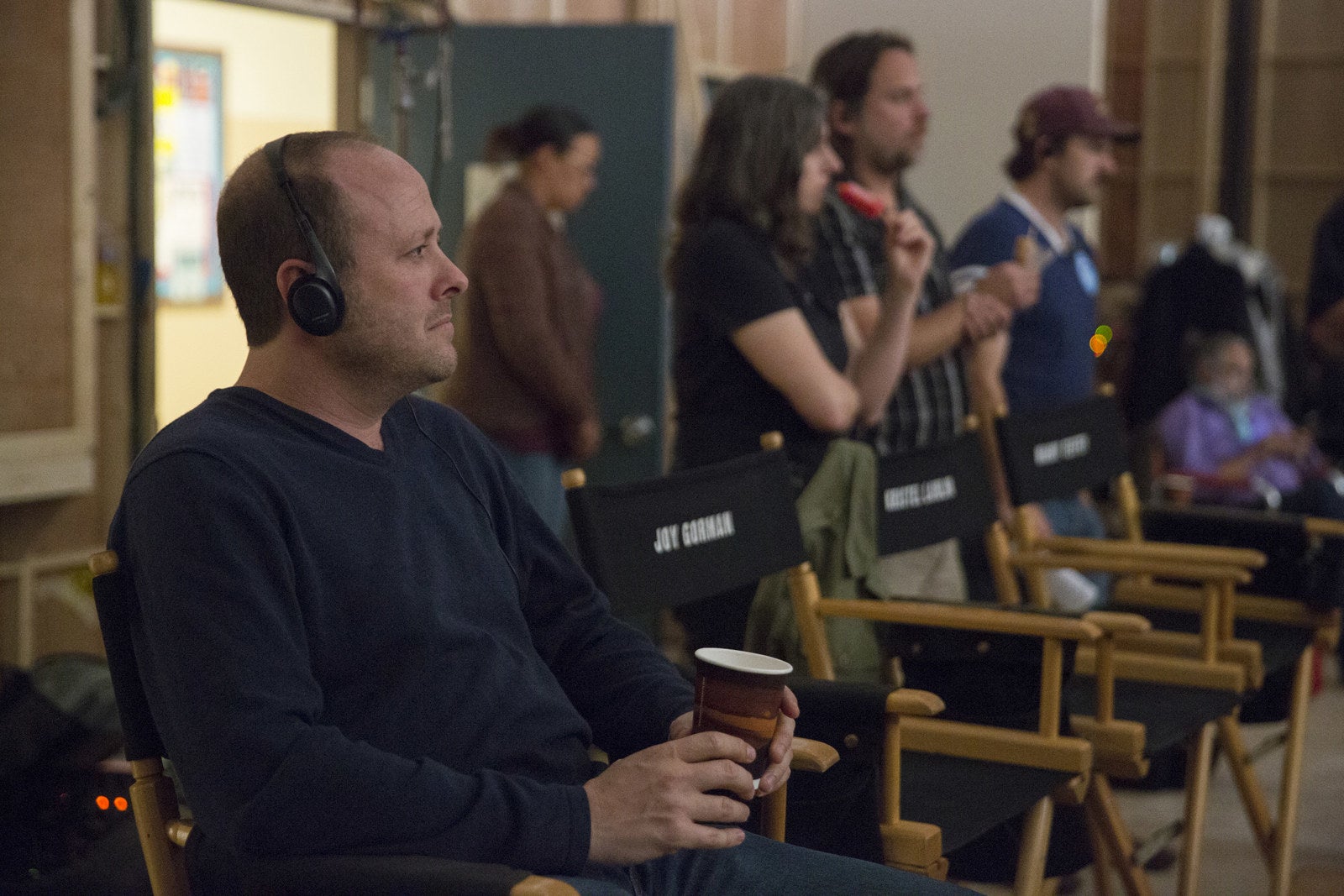
“There are plenty of people who never read the book, and they’ll never read the book, who just say they’re afraid it’s going to glamorize [suicide],” Asher said. “That’s the initial fear, which comes from a positive place and a positive concern. But that’s obviously what we’re combatting. We want to combat people being uncomfortable with the subject matter.”
For some of those who have seen 13 Reasons Why, its depiction of mental health professionals is a chief concern. According to Schwartz of the Jed Foundation, fictional depictions of suicide should be “focused more on the opportunities to get help and the fact that help actually makes a difference” and “framed in a way that crises were responded to and managed and resolved.” Schwartz thinks that Mr. Porter's storyline is one of the most “troubling” and that 13 Reasons Why depicts an “egregious mishandling of the counseling situation.”
In the final episode of the first season, Clay delivers the box of cassette tapes to the last person mentioned on Hannah's list: Liberty High School's guidance counselor, Mr. Porter. Hannah explains that she tried to reach out to Mr. Porter after Bryce assaulted her: “I decided to give life one more chance, but this time I was asking for help because I know I can't do it alone,” she says in a voiceover.
In flashbacks, we see how a distracted and busy Mr. Porter doesn't know how to respond when Hannah says things like “I don't feel anything, I don't care anymore" and “I need everything to stop: people, life.” The final straw for Hannah is Mr. Porter's response to her revealing that she was raped. “Something happened, Hannah, and I believe you,” he says before she walks out of his office. “But if you won’t confront him, then the only other choice is to move on.”
There are a number of other instances in the series when Mr. Porter has conversations with students who might be at risk but doesn't take any further action. (Tyler tells him that he was pantsed in the hallway and that “the kids who make this school a terrible place” should be held responsible. The counselor's reaction is to ask what Tyler might be doing to “provoke” those students. Clay also tells Mr. Porter that he almost threw himself off a cliff one night, and the guidance counselor doesn't report that information or take it too seriously.)
“Seeing that Hannah’s pretty distraught, he doesn’t make any kind of serious effort to follow up with her right away and find out what was going on,” Schwartz said of Mr. Porter. “Clearly she was in some amount of stress.”
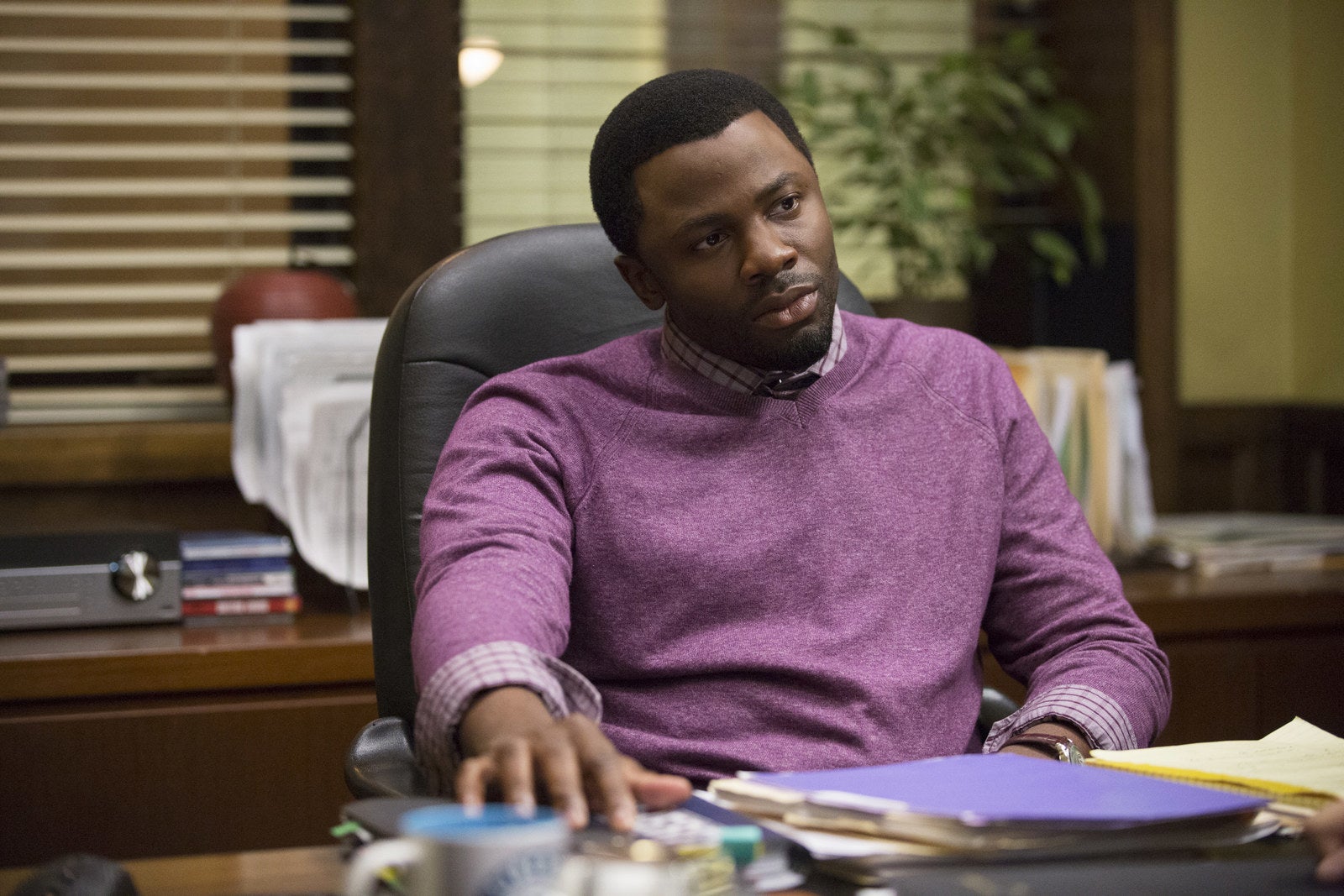
Showing how Mr. Porter fails Hannah “is probably going to have some impact on some group of kids,” he said, worrying that students will not seek help from guidance counselors or other adults because they’ll fear a response similar to Mr. Porter’s.
There’s a large contingency of fans who’ve used Twitter to discuss their disdain with Mr. Porter’s character. “Mr. Porter reminds me how the school systems fail with mental health & suicidal teens,” Twitter user @KasyaJ wrote. “If there was a 'Worst Counselor on the Planet' award, Mr. Porter would win it hands down every single time,” @linzy_lou82 said. Some fans even compared him to counselors who work at their own schools, like @harry_fedoras, who said, “Mr. Porter from 13 Reasons Why basically represents every guidance counselor at my school.”
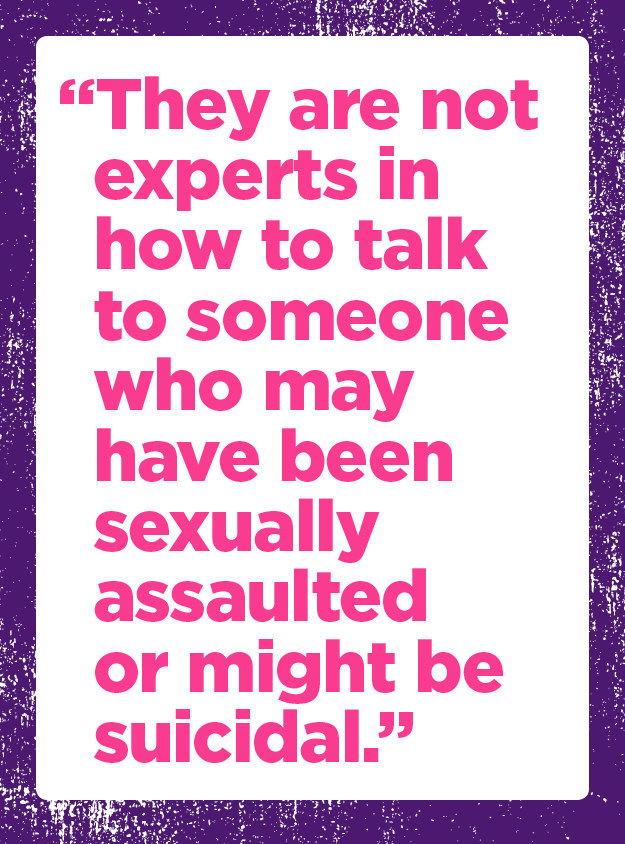
Hsu said she feels compassion for the fictional guidance counselor on 13 Reasons Why. “I did talk with Derek Luke about his role briefly, and I told him, 'I really want you to understand that even though Mr. Porter kind of screws up, I have so much sympathy for him,'” she said.
After working with schools for 20 years, Hsu said her experience is that guidance counselors are often “overwhelmed out of their minds” because they have major caseloads and “minimal, if any, mental health or clinical training.”
“They’re experts in things like helping kids choose courses and apply to their best college and all that stuff,” she explained. “But they are not experts in how to talk to someone who may have been sexually assaulted or might be suicidal.”
After Clay fulfills Hannah's wish by handing over the tapes to Mr. Porter, he solemnly gets up to leave the guidance counselor's office. The future for the counselor and for Liberty High School in general is unclear, considering the legal investigation that's underway. “It has to get better,” Clay says before opening the door. “The way we treat each other and look out for each other. It has to get better somehow.”
Shortly after, Mr. Porter receives news from Principal Bolan (Steven Weber) that Alex, another one of the students mentioned on Hannah’s tapes, is in critical condition at the hospital because he apparently shot himself in the head.
Before Netflix officially renewed 13 Reasons Why for Season 2, Schwartz told BuzzFeed News that he hoped the show would take a more in-depth look at the relationship between mental health and suicide if it returned for more episodes.
“Some of the story arc has put them in some really challenging places. There’s a kid who’s collecting firearms, which is deeply disturbing and concerning, so there are places where this thing could go that could be very, very dark,” he said. This time around, he hopes those behind the show can get it right in ways he believes they failed to in Season 1.
“I think the producers understand now that there is this body of information out there,” he said. “So I would hope that they make sure to be checking in with the right people as they craft the next season.”
Spokespeople for Paramount TV and Netflix told BuzzFeed News, "Heading into production, we've enlisted experts to consult in Season 2, as we did with Season 1." In May, Netflix updated its trigger warnings for the show by including the following message before the first episode of the series: “This fictional series covers several difficult issues, including depression and suicide.” There’s also a link to visit 13ReasonsWhy.info, a website with a list of resources for viewers who “are considering self-injury, suicide or are otherwise in need.” Netflix also updated the trigger warnings that already existed before two of the more graphic episodes of the series to include information about 13ReasonsWhy.info.
As far as what Season 2 of 13 Reasons Why will entail, the official Netflix US Twitter account shared a list of five details: “We'll see others' perspectives on Hannah's story; Jessica's story will continue as she tries to recover and return to normal life; there will be a narrator, but it won't be Hannah — no more tapes; the season will explore 'the way we raise boys up into men and the way we treat girls and women in our culture — and what we could do better in both cases'; Bryce will hopefully get what's coming to him.”
What we know about @13ReasonsWhy season 2 — so far
As fans wait for the second season of 13 Reasons Why, other TV series will continue to address suicide. The Season 1 finale of Riverdale on May 11, for example, showed Cheryl Blossom (Madelaine Petsch) attempt to drown herself. After her father, Clifford Blossom (Barclay Hope), hangs himself because everyone discovers he's responsible for his son's murder, Cheryl's mother, Penelope (Nathalie Boltt), says to her daughter, “Maybe your father had the right idea, just end it.” Cheryl survives because Archie (KJ Apa) breaks through the frozen lake where she tries to drown herself and then performs CPR on her, but the episode explicitly shows the suicide attempt and how her character exhibits signs of someone who is struggling with suicidal thoughts.
“Poor Cheryl has a crazy family. But suicide isn't the answer,” one fan, @742051Owen, commented. Others brought up how dangerous it was for Cheryl to be left by herself after she attempted suicide. “Why did Archie & co. think it was smart to leave Cheryl alone after a suicide attempt?” @DarnellBebop tweeted.
Some even made direct connections between Cheryl and Hannah. @Vecetej asked, “Why is no one paying attention to the fact that Cheryl is doing exactly what Hannah Baker did before she committed suicide???”
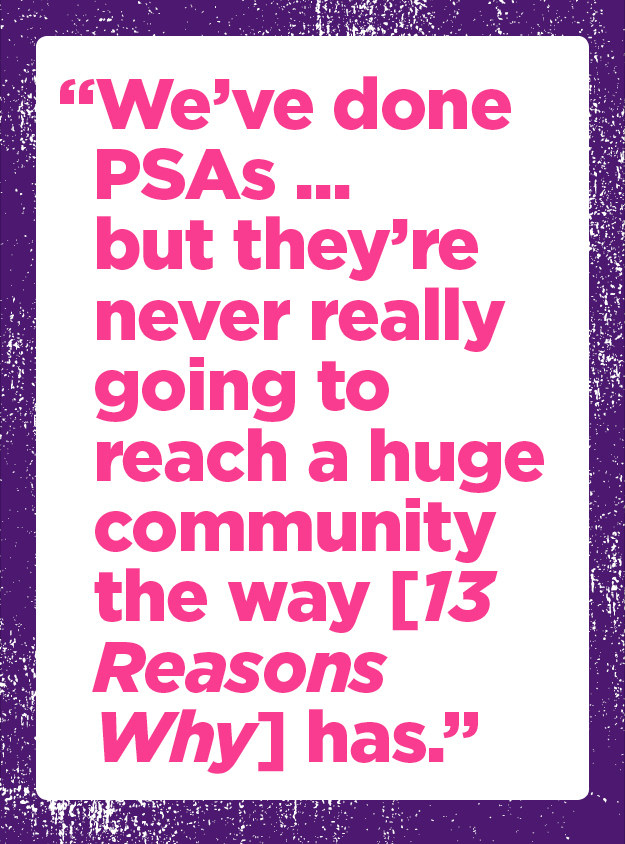
Creators will keep telling stories that reflect the harsh realities teens are facing; some parents, teachers, and mental health experts will continue to challenge them about the possible impact they can have; and young people will still be watching, with or without parental supervision, and perhaps more on television than anywhere else.
“There is a role that things like art and media play in expressing emotional topics and pain and feelings, and educating people,” Hsu said. “We’ve done PSAs, and you can do things like that, but they’re never really going to reach a huge community the way [13 Reasons Why] has.” ●
If you or someone you know is going through a rough time, feeling depressed, or thinking about self-harm, you can call the National Suicide Prevention Lifeline at
1-800-273-8255 or visit its website.
